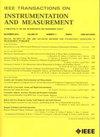A Novel Process Monitoring and Root Cause Diagnosis Strategy Based on Knowledge-Data-Integrated Causal Digraph for Complex Industrial Processes
IF 5.6
2区 工程技术
Q1 ENGINEERING, ELECTRICAL & ELECTRONIC
IEEE Transactions on Instrumentation and Measurement
Pub Date : 2024-11-13
DOI:10.1109/TIM.2024.3497056
引用次数: 0
Abstract
With the integrated and scaled development of modern industrial processes, multiple control units are strongly coupled, forming a complex interconnected network. This leads to the propagation and evolution of faults within the network, which will affect the quality of products and the safety of industrial processes. This article proposes a novel process monitoring and root cause diagnosis strategy for complex industrial processes based on a knowledge-data-integrated causal digraph. Compared with traditional single data-driven methods, this strategy combines process data and knowledge to improve the ability of fault detection and diagnosis. First, an attention-based time convolutional network is performed on process variables to construct a causal digraph. The causal digraph is trimmed and refined using the process knowledge to solve the problem of redundant causality and enhance interpretability. Second, the complex industrial process is decomposed into multiple sub-blocks, and the causal relationship between sub-blocks is obtained. On this basis, a process monitoring model for collaborative analysis of temporal and spatial information is established, where spatial information among sub-blocks is obtained through the interaction of information between them, and the temporal information within sub-blocks is captured by kernel canonical variate analysis (KCVA). Subsequently, a fault diagnosis method based on global and local causal digraphs is designed. Process data and causal digraphs are used to select fault variables and analyze causality relationships respectively, which can infer the fault root cause and propagation path. Finally, the experimental results on the real dataset of the float glass production process demonstrate that our strategy not only achieves significant improvements over other methods but also has a favorable application in industrial processes.基于知识-数据-集成因果关系图的复杂工业过程监控和根本原因诊断新策略
随着现代工业流程的集成化和规模化发展,多个控制单元紧密耦合,形成了一个复杂的互连网络。这就导致了故障在网络内的传播和演化,从而影响产品质量和工业流程的安全性。本文提出了一种基于知识数据集成因果图的新型复杂工业过程监控和根本原因诊断策略。与传统的单一数据驱动方法相比,该策略将过程数据与知识相结合,提高了故障检测和诊断能力。首先,对过程变量执行基于注意力的时间卷积网络,以构建因果图。利用过程知识对因果数字图进行修剪和细化,以解决冗余因果关系问题,提高可解释性。其次,将复杂的工业流程分解为多个子块,并获得子块之间的因果关系。在此基础上,建立了时空信息协同分析的过程监控模型,其中子块之间的空间信息通过子块之间的信息交互获取,子块内部的时间信息通过内核典型变量分析(KCVA)获取。随后,设计了一种基于全局和局部因果图的故障诊断方法。过程数据和因果图分别用于选择故障变量和分析因果关系,从而推断出故障根源和传播路径。最后,浮法玻璃生产过程真实数据集的实验结果表明,与其他方法相比,我们的策略不仅取得了显著的改进,而且在工业过程中具有良好的应用前景。
本文章由计算机程序翻译,如有差异,请以英文原文为准。
求助全文
约1分钟内获得全文
求助全文
来源期刊

IEEE Transactions on Instrumentation and Measurement
工程技术-工程:电子与电气
CiteScore
9.00
自引率
23.20%
发文量
1294
审稿时长
3.9 months
期刊介绍:
Papers are sought that address innovative solutions to the development and use of electrical and electronic instruments and equipment to measure, monitor and/or record physical phenomena for the purpose of advancing measurement science, methods, functionality and applications. The scope of these papers may encompass: (1) theory, methodology, and practice of measurement; (2) design, development and evaluation of instrumentation and measurement systems and components used in generating, acquiring, conditioning and processing signals; (3) analysis, representation, display, and preservation of the information obtained from a set of measurements; and (4) scientific and technical support to establishment and maintenance of technical standards in the field of Instrumentation and Measurement.
 求助内容:
求助内容: 应助结果提醒方式:
应助结果提醒方式:


